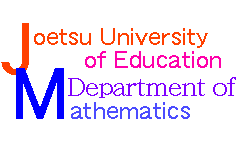

| 年 | タイトル |
|---|---|
| 2004 | Perspectives on the Teaching of Mathematics |
| 2003 | Learning and Teaching Mesurement |
| 2002 | Making Sense of Fractions, Ratios, and Proportions |
| 2001 | Learning mathematics for a new century |
| 2000 | (representation?) |
| 1999 | Developing Mathematical Reasoning in Grades K-12 |
| 1998 | Teaching and Learning Algorithms in School Mathematics |
| 1997 | Multicultural and Gender Equity in the Mathematics Classroom: The Gift of Diversity |
| 1996 | Communication in Mathematics: K-12 and Beyond |
| 1995 | Connecting Mathematics across the Curriculum |
| 1994 | Professional Development for Teachersof Mathematics |
| 1993 | Assessment in the mathematics classroom |
| 1992 | Calculators in mathematics education |
| 1991 | Discrete Mathematics across the Curriculum K-12 |
| 1990 | Teaching and Learning Mathematics inthe 1990s |
| 1989 | New Directions for Elementary SchoolMathematics |
| 1988 | The Ideas of Algebra K-12 |
| 1987 | Learning and Teaching Geometry, K-12 |
| 1986 | Estimation and Mental Computation |
| 1985 | The Secondary School MathematicsCurriculum |
| 1984 | Computers in Mathematics Education |
| 1983 | The Agenda in Action |
| 1982 | Mathematics for the Middle Grades (5-9) |
| 1981 | Teaching Statistics and Probability |
| 1980 | Problem Solving in School Mathematics |
| 1979 | Applications in School Mathematics |
| 1978 | Developing Computational Skills |
| 1977 | Organizing for Mathematics Instruction |
| 1976 | Measurement in School Mathematics |
| 37th(1975) | Mathematics Learning in Early Childhood |
| 36th | Geometry in the Mathematics Curriculum |
| 35th | The Slow Learner in Mathematics |
| 34th | Instructional Aids in Mathematics |
| 33rd | The Teaching of Secondary School Mathematics |
| 32nd | A History of Mathematics Education in the United States and Canada |
| 31st | Historical Topics for the Mathematics Classroom |
| 30th | More Topics in Mathematics fof Elementary School Teachers |
| 29th | Topics in Mathematics for Elementary School Teachers |
| 28th | Enrichment Mathematics for High School |
| 27th | Enrichment Mathematics for the Grades |
| 26th | Evaluation in Mathematics |
| 25th | Instruction in Arithmetic |
| 24th | The Growth of Mathematical Ideas, Grades K-12 |
| 23rd | Insights into Modern Mathematics |
| 22nd | Emerging Practices in Mathematics Education |
| 21st(1953) | The Learning of Mathematics: Its Theory and Practice |
| 20th | The Metric System of Weights and Measures |
| 19th | Surveying Instruments: Their Hisotry and Classroom Use |
| 18th | Multi-Sensory Aids in the Teaching of Mathematics |
| 17th | A Source Book of Mathematical Application |
| 16th | Arithmetic in General Education |
| 15th | The Place of Mathematics in SecondaryEducation |
| 14th | The Training of Mathematics Teachers |
| 13th(1938) | The Nature of Proof (by H. P. Fawcett) |
| 12th | Approximate Computation |
| 11th(1936) | The Place of Mathematics in Modern Education |
| 10th | The Teaching of Arithmetic |
| 9th | Relational and Functional Thinkingin Mathematics (by H. R. Hamley) |
| 8th | The Teaching of Mathematics in the Secondary School |
| 7th | The Teaching of Algebra |
| 6th(1931) | Mathematics in Modern Life |
| 5th | The Teaching of Geometry |
| 4th | Significant Changes and Trends in the Teaching of Mathematicsthroughout the World since 1910 |
| 3rd | Selected Topics in the Teaching of Mathematics |
| 2nd | Curriculum Problems in Teahcing Mathematics |
| 1st(1926) | A General Survey of Progress in the LastTwenty-Five Years |